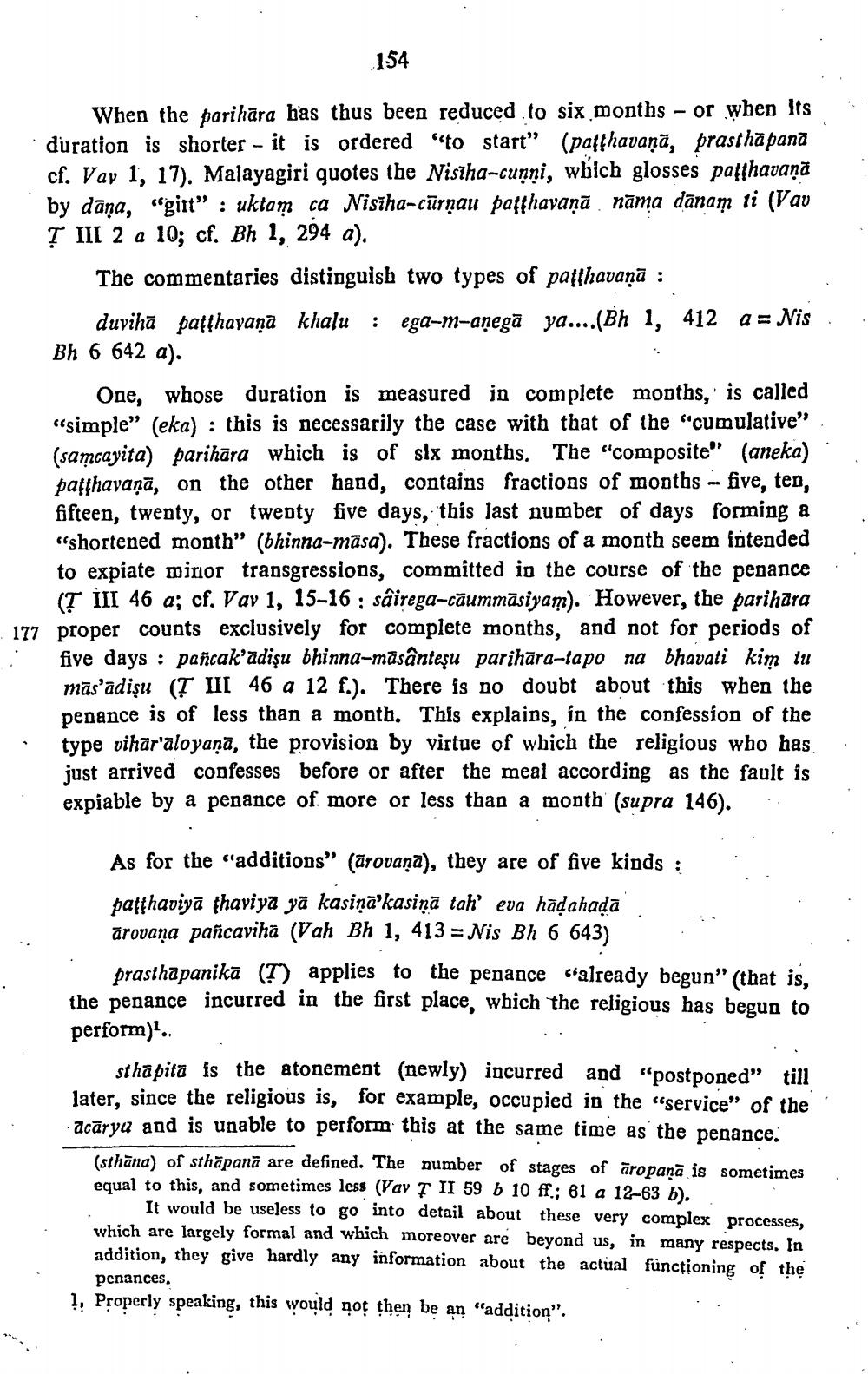________________
-154
When the parihāra has thus been reduced to six months - or when Its duration is shorter - it is ordered "to start" (pafthavaņā, prasthapana cf. Vay 1, 17). Malayagiri quotes the Nisiha-cunni, which glosses patthavaņā by dana, "girt" : uktam ca Nisiha-cūrņau paffhavaņā nāma dānam ti (Vav Ţ III 2 a 10; cf. Bh 1, 294 a).
The commentaries distinguish two types of pafthavaņā :
duvihā patthayaņa khalu : ega-m-anegã ya....(Bh 1, 412 a = Nis Bh 6 642 a).
One, whose duration is measured in complete months, is called “simple” (eka) : this is necessarily the case with that of the "cumulative" (samcayita) parihara which is of six months. The "composite" (aneka) patthayaņā, on the other hand, contains fractions of months -- five, ten, fifteen, twenty, or twenty five days, this last number of days forming a “shortened month" (bhinna-māsa). These fractions of a month seem intended to expiate minor transgressions, committed in the course of the penance
(T III 46 a; cf. Vav 1, 15-16 : säirega-cāummāsiyam). However, the parihara 177 proper counts exclusively for complete months, and not for periods of
five days : pañcak'ādişu bhinna-māsânteşu parihāra-lapo na bhavati kim tu mās'adişu (T III 46 a 12 f.). There is no doubt about this when the penance is of less than a month. This explains, in the confession of the type vihar'āloyanā, the provision by virtue of which the religious who has just arrived confesses before or after the meal according as the fault is expiable by a penance of more or less than a month (supra 146).
As for the "additions” (arovanā), they are of five kinds : paffhaviya thaviya ya kasiņā’kasinā tah' eva hadahada ārovana pañcaviha (Vah Bh 1, 413 = Nis Bh 6 643)
prasthapanikā (?) applies to the penance calready begun" (that is, the penance incurred in the first place, which the religious has begun to perform).
sthapita is the atonement (newly) incurred and “postponed" till later, since the religious is, for example, occupied in the service” of the acārya and is unable to perform this at the same time as the penance.
(sthāna) of sthāpanā are defined. The number of stages of aropana is sometimes equal to this, and sometimes less (Vav T II 59 b 10 ff: 61 a 12-63 b).
It would be useless to go into detail about these very complex processes, which are largely formal and which moreover are beyond us, in many respects. In addition, they give hardly any information about the actual functioning of the
penances, !, Properly speaking, this would not then be an "addition":




